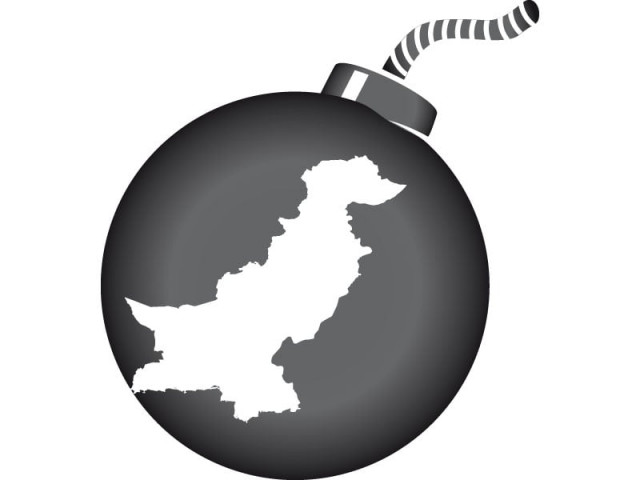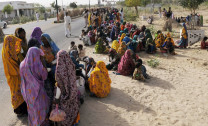Suicide attacks registered marked decline: report
Attributed to negotiations with Taliban, counter-insurgency measures, military’s defensive tactics.

Some silver lining appears to be on the horizon – the year 2011 witnessed a marked decline in suicide attacks in the country, according to a Conflict Monitoring Centre report, a data collection NGO which taps into interior ministry, health department and inter-services public relations (ISPR) resources.
As a result, the number of deaths also decreased by 48% compared to the previous year. The brunt of fatalities were faced by civilians – out of 606 people killed in 2011, 358 were civilians while the army lost 33 of its soldiers, the Frontier Constabulary lost 100 and the police lost 54 personnel. A total of 23 of the 41 attacks targeted civilians. As many as 51 suicide bombers were used in the attacks – certain hits used more than one human bomb. Only four of the recorded bomb attacks targeted the military.
“There are a number of factors that can be attributed to this marked decline in suicide violence,” said political and security analyst Dr Hasan Askari Rizvi. “The fact that the US and Pakistan are both trying to woo Taliban groups to the negotiating table and the parties involved in the negotiations feel that violence has to come down to have a meaningful chance for the talks [is one],” he said. “The second most important factor is marked improvement in defensive measures taken by military and paramilitary forces fighting these elements”. Counter-insurgency measures taken by Nato and Pakistani forces must be accounted for as well, he added.
Eastern neighbour Afghanistan, however, fared worse. The number of suicide attacks in the country was 2.5 times higher than in Pakistan, with a total of 102 attacks, in which 675 people were killed.
Militants have carried out more than 300 suicide attacks in Pakistan since 2002. Up to 4,810 people have been killed in these attacks, including the bombers themselves.
How provinces have fared
Punjab has witnessed a reduction by 90% in attacks since 2010. In Sindh, on the other hand, suicide bombings have increased compared to the previous year. K-P remains the most vulnerable, being victim to 53% of the total attacks since 2002 (162 in total). Punjab is next in the line, with 55 suicide attacks over the last nine years. The Federally Administered Tribal Areas (Fata) also fared badly, with 53 attacks since 2002. Sindh and Balochistan both witnessed 15 suicide attacks each over this time period.
K-P and Fata faced 71% of all suicide attacks from 2002 to 2011 collectively.
Despite this bleak picture, there is some encouraging news for K-P. In comparison with 2009, a 50% reduction in suicide attacks has been observed. On the other hand, no significant reduction is seen in comparison with 2010.
Published in The Express Tribune, January 3rd, 2012.



















COMMENTS
Comments are moderated and generally will be posted if they are on-topic and not abusive.
For more information, please see our Comments FAQ